
Key Takeways
- Online brand management is crucial for ensuring brand consistency across multiple digital channels.
- Implementing best practices like using a centralized digital asset management (DAM) system, defining brand guidelines, and utilizing collaboration tools can improve productivity and brand coherence.
- BrandLife helps teams stay aligned by centralizing digital assets, enforcing brand standards, and providing AI-powered search features.
- Real-life examples demonstrate how strategic branding leads to success across diverse ventures. The ABARA Marketing Group saw a 30% decrease in brand inconsistencies, ensuring every piece of marketing content stayed on-brand and polished.
Customers interact with your brand across multiple channels, including mobile, web, social media, and more, before making a purchase. This omnichannel journey demands a consistent brand experience at every touchpoint.
However, achieving that level of brand consistency becomes challenging if you're relying on makeshift cloud storage solutions like Google Drive or Dropbox to manage your digital assets.
To effectively support your creative teams and brand managers, you need a centralized system that ensures easy access to the latest versions of your assets. This keeps everyone aligned with your brand identity, improves efficiency, and ensures your audience experiences the same quality and tone wherever they meet your brand.
This article will share why online brand management is crucial in 2025 and how adopting a smart, efficient digital asset management (DAM) platform like BrandLife can transform your digital presence.
What is Online Brand Management?
It combines strategy, technology, and creative execution to ensure that every piece of content, image, message, or interaction consistently reflects your brand’s identity, values, and voice.
Key elements of online brand management include:
- Consistent brand messaging: Making sure your tone, visuals, and messaging are uniform across all digital touchpoints.
- Centralized digital asset management: Organizing and storing brand assets (logos, images, videos, templates) so teams can easily access the latest approved versions.
- Reputation monitoring and response: Tracking how customers talk about your brand online and addressing feedback promptly.
- Brand compliance: Ensuring campaigns and materials follow brand guidelines and meet legal/industry requirements.
- Data-driven optimization: Using analytics to measure performance and adjust strategies for better engagement and brand perception.
In short, online brand management enables you to deliver a unified, trustworthy brand experience across the ever-expanding digital landscape, strengthening customer loyalty and competitive advantage.
Online vs. offline brand management: What's the difference?
While both online and offline channels shape how customers see your brand, managing them effectively requires different approaches.
A digital asset management solution like BrandLife helps keep both worlds aligned by centralizing and controlling every brand asset.
Why Online Brand Management Matters in 2025
As digital touchpoints continue to multiply and customer expectations evolve, maintaining a consistent and compelling brand presence across every channel is no longer optional.
It's a necessity for building trust and driving business growth. Let’s understand how.
Rise of omnichannel customer journeys
Customers increasingly engage with brands across various platforms. According to CapitalOne Shopping Research, retailers that leverage three or more channels experience a 250% higher customer engagement compared to those using only a single channel.
Managing these touchpoints cohesively can influence whether a brand remains top of mind throughout the buyer's journey.
Using a reliable online brand management service like BrandLife, you can organize and centralize your assets while maintaining version control.
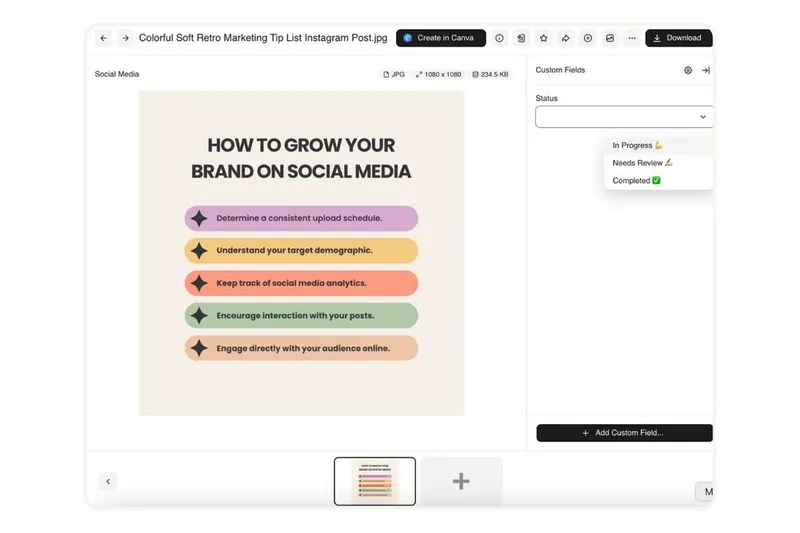
This ensures that your team always has access to the latest and most accurate content, streamlining collaboration and ensuring brand consistency.
How brand perception impacts conversions
A cohesive brand presence significantly impacts customer decisions. 46% of US customers are willing to pay more for brands they trust, and that trust is built through consistency.
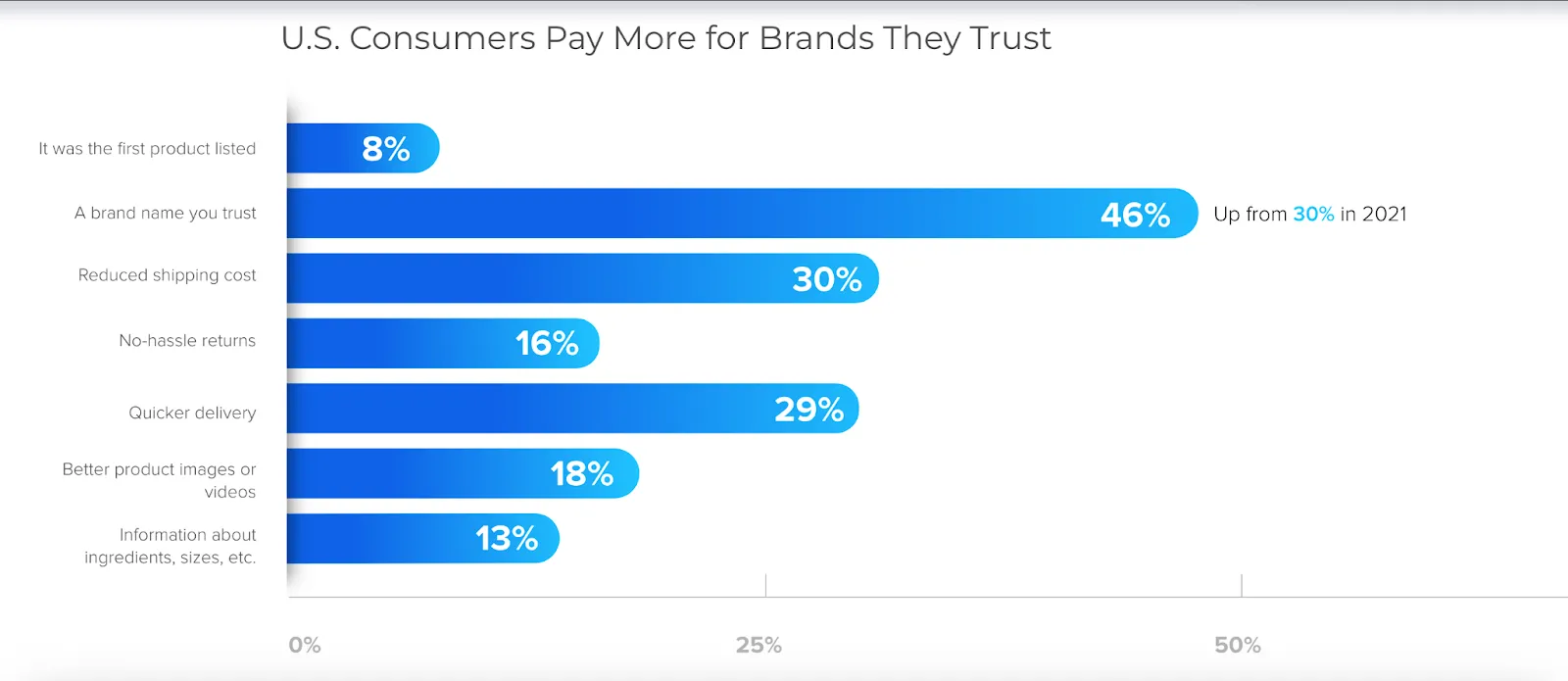
This consistency drives conversions—whether through social media, email marketing, or your website. Online brand management plays a crucial role in ensuring that your messaging, visuals, and tone remain consistent across all touchpoints.
The role of user-generated content and reviews
User-generated content (UGC) and online reviews are powerful tools for building brand credibility and trust. These assets don’t just live on social feeds or review sites; they become part of your brand’s storytelling across multiple digital touchpoints.
A brand asset management platform like BrandLife helps you capture, organize, and tag UGC, such as customer photos, videos, and testimonials, so they can be easily reused in campaigns, product pages, and social media.
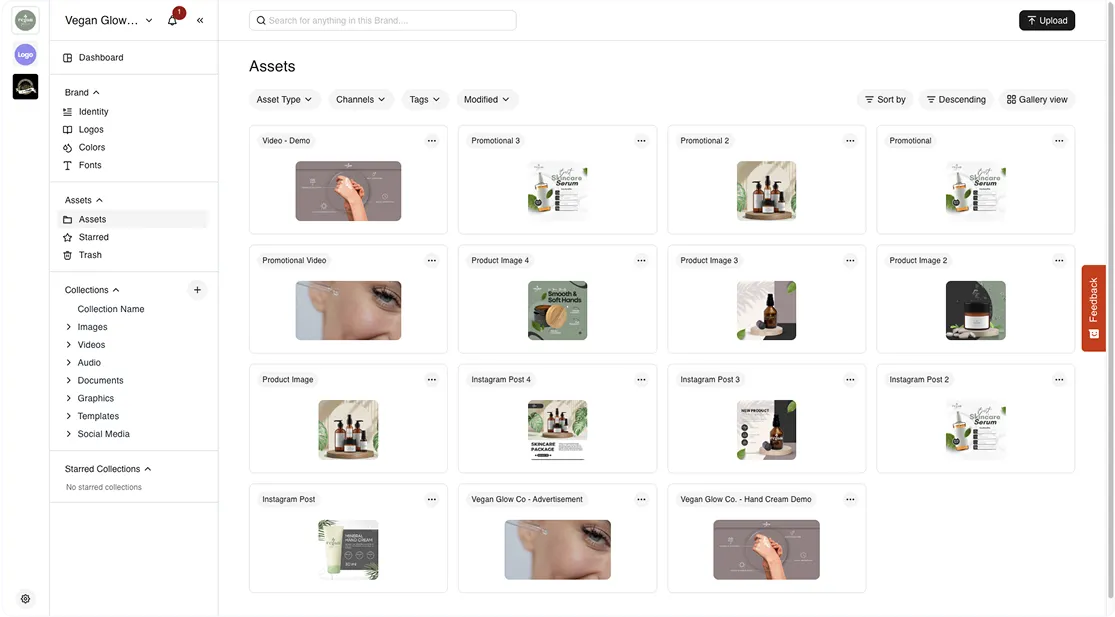
BrandLife centralizes these assets alongside your core brand materials, ensuring they’re accessible, on-brand, and ready to deploy where they’ll have the most impact.
Integrating UGC into your asset library boosts authenticity, engagement, and consistency across all channels.
Online Brand Management Best Practices
To maintain a strong, consistent presence across every digital touchpoint, online brand management demands clear strategies, the right tools, and disciplined execution. Here are some key practices to guide your approach.
1. Define your brand positioning clearly
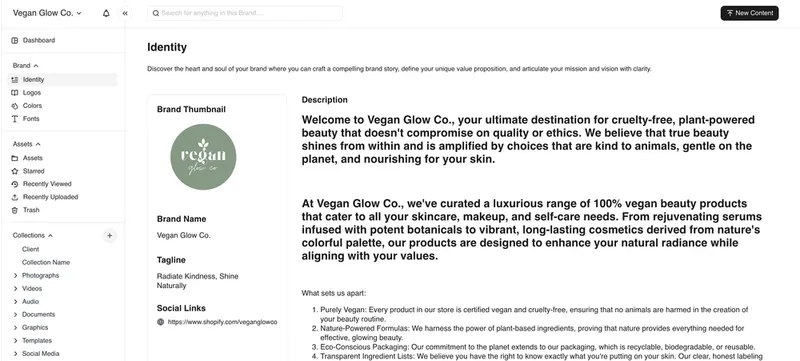
Before diving into asset management, lock in your brand positioning—who you are, what you stand for, and how you want to be perceived. This clarity becomes the foundation for every decision, from visual design to messaging tone.
Pro Tip: Document your positioning in BrandLife so it’s always accessible to internal teams and partners.
2. Build centralized brand guidelines
Brand guidelines serve as the bible for your brand's visual identity, tone, and messaging. A digital asset management platform like BrandLife centralizes brand guidelines to give creative teams a clear, single source of truth.
This allows them to produce assets with a cohesive look and feel across all channels, dramatically reducing the need for multiple revision rounds caused by off-brand elements.
3. Use a digital asset management system

A robust digital asset management system eliminates the chaos of scattered folders and ad-hoc cloud storage tools like Google Drive or Dropbox. You can easily track versions, control access, or maintain consistency.
With BrandLife’s secure, searchable repository, teams can find, share, and use the right files instantly—without wasting time digging through multiple platforms.
4. Maintain visual consistency across all platforms

Maintaining visual consistency is crucial in reinforcing brand identity. Ensure that your colors, fonts, and logo are applied consistently across your digital and physical assets.
BrandLife makes this easy by keeping all approved visuals in one hub, so whether it’s a social post or a trade show banner, your identity remains intact.
5. Unify tone of voice across channels
Your tone of voice should remain consistent whether you’re writing blog posts, social media updates, or customer service emails. A unified voice ensures that your message resonates with your audience across all touchpoints.
Pro tip: Store approved messaging frameworks and copy blocks in BrandLife so every team member communicates in the same brand voice.
6. Keep marketing and product content up-to-date
Outdated content can harm your brand’s credibility. A crucial aspect of online brand management is regularly auditing your digital assets to ensure accuracy and relevancy.
Implementing a digital asset management platform is a great first step, but if you’re not conducting regular audits and updating brand guidelines, the system will be ineffective.
Tools like BrandLife make it easy to share the latest versions of your guidelines with all collaborators, ensuring everyone has access to the most up-to-date assets.
Additionally, it guarantees that only the latest, approved versions of marketing materials are used, preventing outdated or incorrect content from slipping through the cracks.
7. Monitor and integrate customer feedback
Actively track what customers are saying about your brand, and turn those insights into action. Use online brand management service tools like Google Alerts, Brandwatch, Hootsuite Insights, or Sprout Social to collect and analyze reviews, social mentions, and other feedback in real time.

These tools scan online platforms, review sites, and social media for brand mentions, then use analytics to identify sentiment, trends, and recurring themes.
Identify recurring themes, address concerns promptly, and highlight positive testimonials in your campaigns. By tagging and categorizing UGC, you can easily repurpose it for marketing materials while keeping every asset on-brand.
8. Enable teams with self-serve creative templates

Empower teams with templates that align with brand guidelines, allowing them to quickly create content without compromising on consistency.
BrandLife offers customizable templates to help teams stay aligned with brand standards. It integrates seamlessly with creative tools like Canva and Figma, so your team can create on-brand presentations, social posts, and ad designs without leaving the platform.
Once approved, templates are ready for your creative teams to reuse in future campaigns—keeping production fast, consistent, and stress-free.
How to Stay in Control of Your Brand Online
Your brand’s online presence is your reputation. Staying in control means monitoring, refining, and protecting it at every touchpoint.
Here’s how to empower your brand:
Empower internal teams and external partners

Empower your teams and external partners by providing them access to a centralized platform where they can access the latest assets and guidelines. This ensures everyone is aligned with your brand’s vision and working with the most current resources.
For instance, BrandLife simplifies sharing assets not just with internal team members but also with external partners or stakeholders in just a few clicks.
Its shareable link feature with access controls and optional expiration dates makes it easy to collaborate securely while maintaining brand consistency.
Use version control and permissions for assets

Track asset revisions and restrict access to sensitive files to maintain control over your brand’s online presence. Otherwise, your team risks using outdated or unauthorized assets, potentially compromising brand consistency and security.
BrandLife offers robust version control and permission-based sharing to ensure that only the right people have access to the most up-to-date files.
With role-based permissions, BrandLife lets you manage who can view or modify specific assets, ensuring that your brand’s integrity is consistently upheld across all materials and collaborators.
Track brand compliance in real-time
A single off-brand post or mismatched design can weaken your brand’s credibility online. Real-time compliance tracking ensures every asset—whether used by internal teams or external partners—meets your brand guidelines before it goes live.
With BrandLife, you can monitor usage, flag inconsistencies instantly, and keep your brand identity consistent across every channel.
Conduct regular brand audits
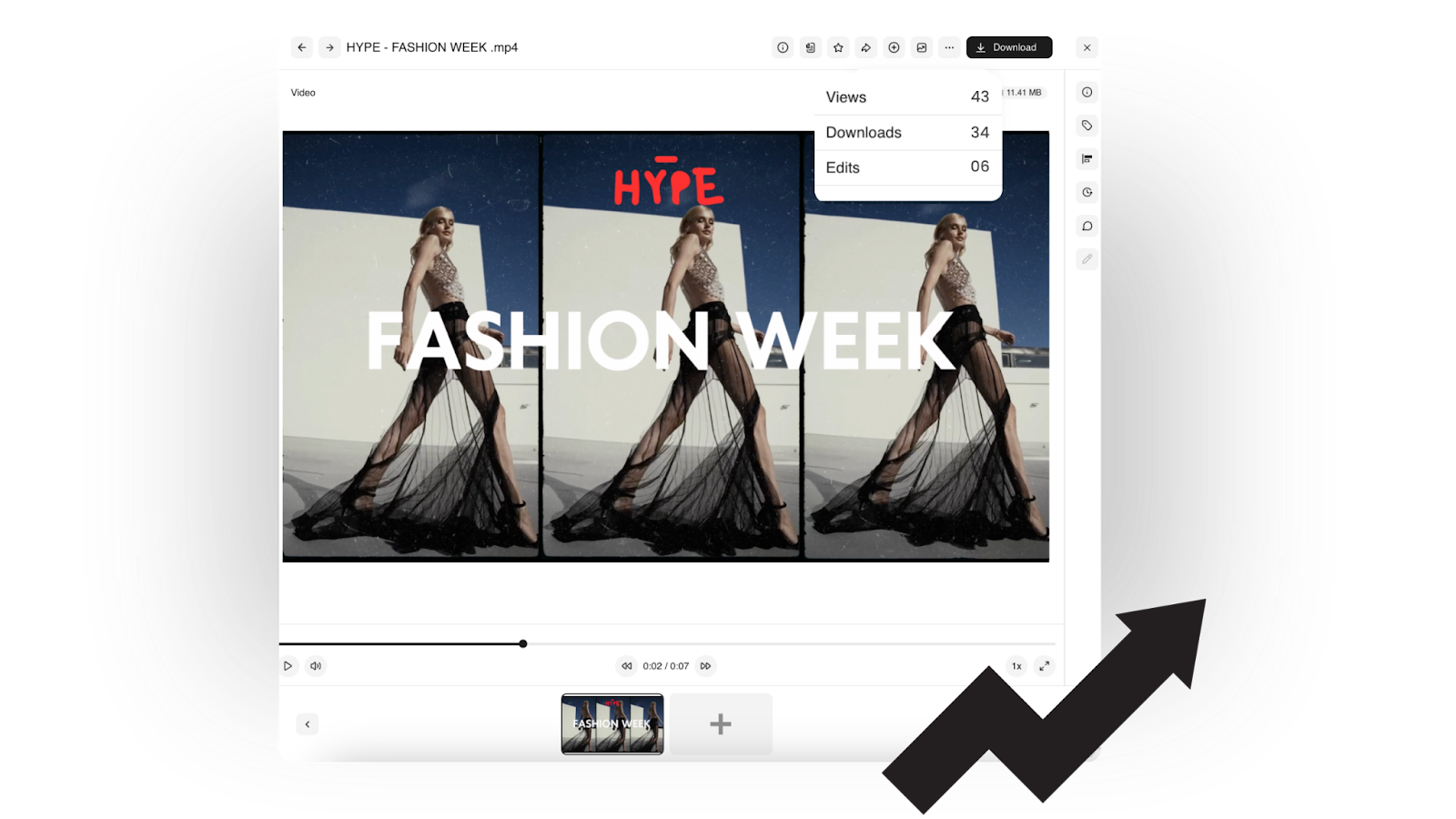
A consistent brand image builds trust, while inconsistencies can erode it, especially in today’s fast-moving digital space. Regular audits help you stay in control of your online presence by ensuring your brand is represented accurately across every touchpoint.
With BrandLife’s built-in analytics, you can track asset usage, measure performance, and quickly spot areas for improvement—keeping your brand sharp, recognizable, and trustworthy.
How Different Industries Use BrandLife for Online Brand Management
From retail brands to creative agencies and non-profit organizations, BrandLife empowers teams across industries to centralize assets, maintain brand consistency, and streamline campaigns.
Here’s how brands use BrandLife to ensure effective online brand management:
Streamlining asset distribution across marketing and creative teams
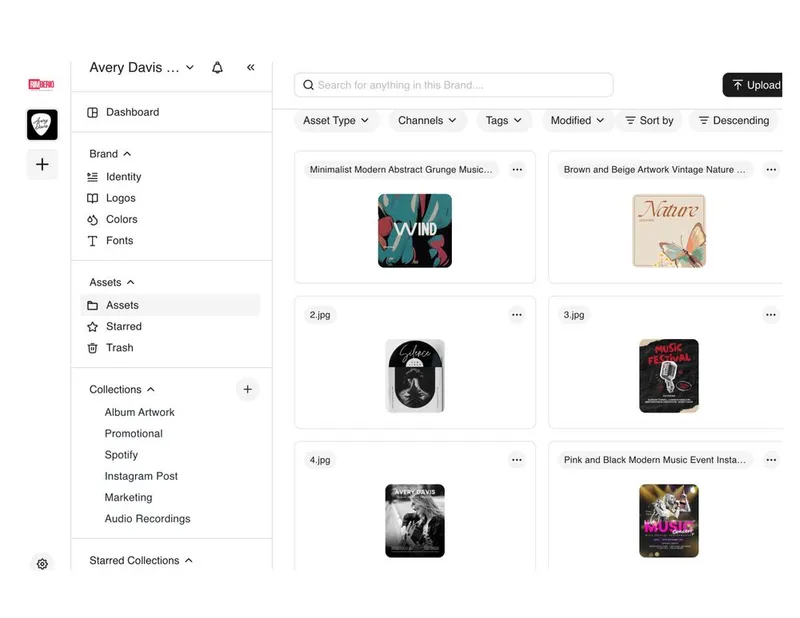
Brands managing multiple campaigns across various platforms can benefit from BrandLife’s centralized asset management. This tool ensures that marketing and creative teams have access to the latest assets, reducing time spent searching for the right files.
Scaling brand content creation with templates

BrandLife integrates with Slack to deliver real-time updates, notifications, and messages within the digital asset management workspace.
Create, customize, and launch on-brand content faster. With BrandLife’s integrations with Canva, Figma, and Slack, teams can design directly within the platform, get quick approvals, and push assets live—without switching tools.
Keeping design locked, but editable where needed
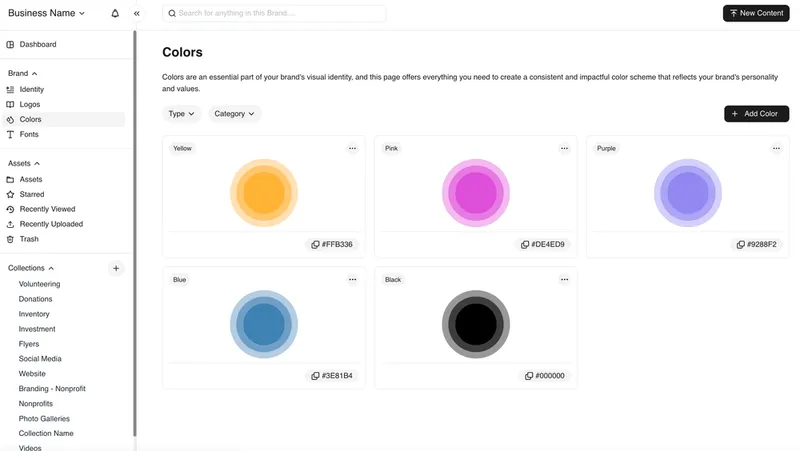
Designers and creatives often need the flexibility to adapt content for different purposes. BrandLife allows users to lock certain assets for consistency while enabling others to edit as necessary, ensuring both creativity and brand integrity.
If you're ready to optimize your online brand management, try BrandLife free for 14 days or subscribe to our free plan today.
Frequently Asked Questions
Online brand management is the process of managing your digital brand presence to ensure consistency and authenticity. It is crucial because it builds trust and recognition, leading to increased customer loyalty and conversions.
A digital asset management system, like BrandLife, centralizes all brand assets, ensuring that teams can easily access and use the latest, most accurate materials, maintaining visual and messaging consistency.
Look for features like version control, customizable brand guidelines, AI-powered asset tagging, and collaboration tools. BrandLife offers all of these, helping streamline online brand management. Besides, BrandLife’s in-built analytics tool helps you track asset usage, brand consistency, and performance across channels effectively.







